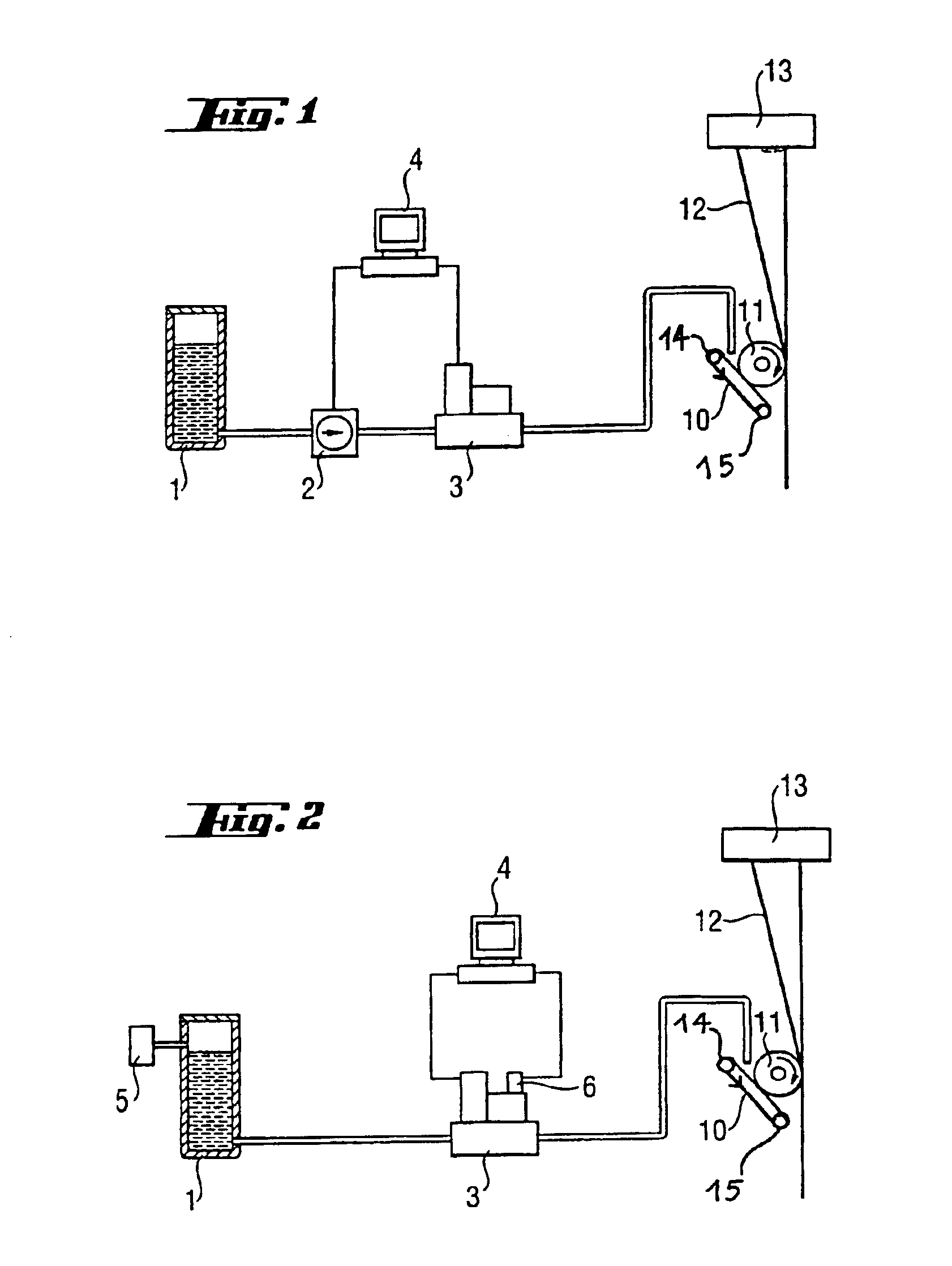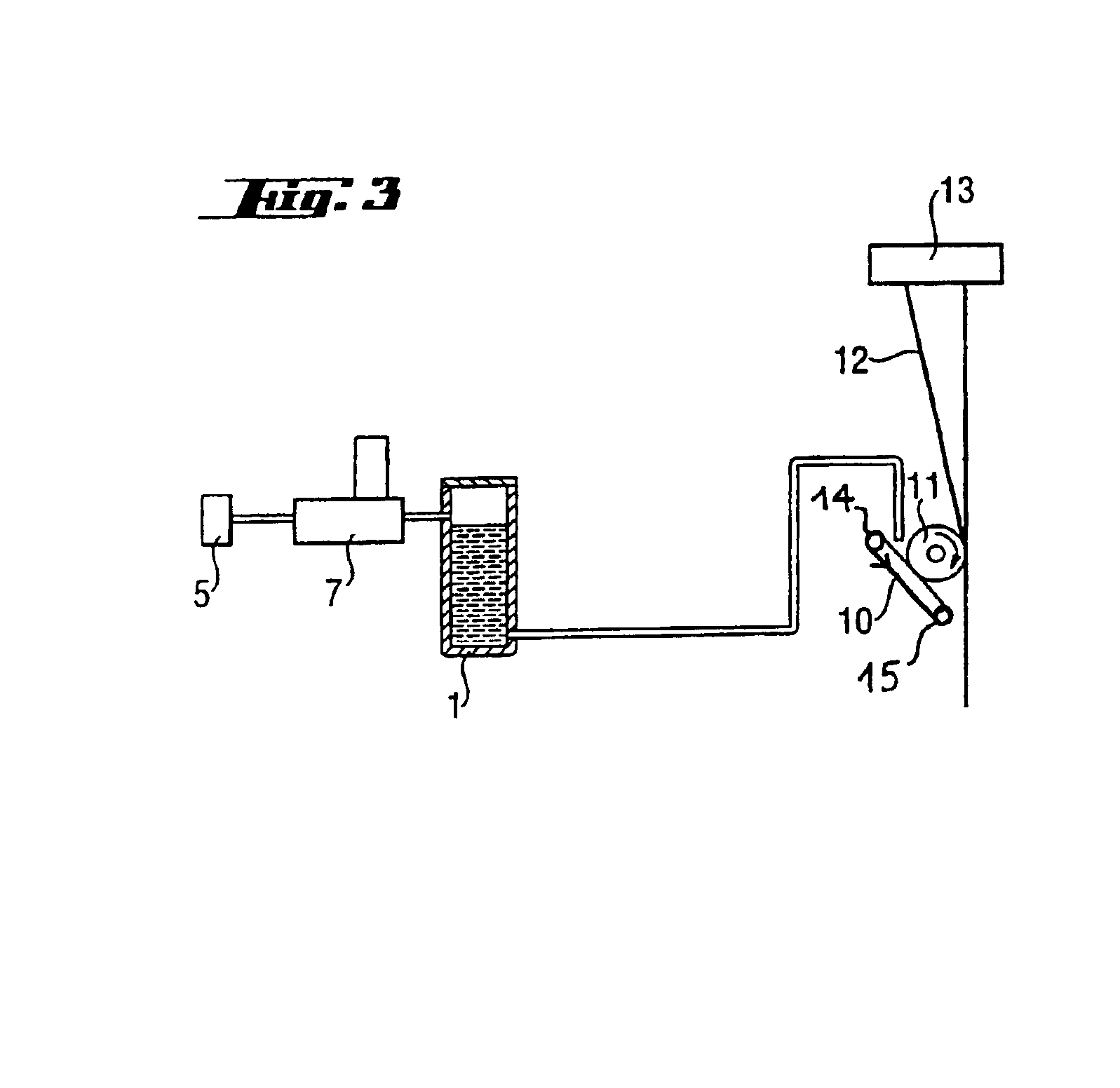Method for making yarn and products comprising same
a technology of reinforced fibers and composites, applied in the direction of superimposed coating process, liquid/solution decomposition chemical coating, coating, etc., can solve the problems of affecting the operation of textile machinery, affecting the quality of yarn, etc., and achieve the effect of low loss on ignition
- Summary
- Abstract
- Description
- Claims
- Application Information
AI Technical Summary
Benefits of technology
Problems solved by technology
Method used
Image
Examples
Embodiment Construction
[0062]The devices of the present invention comprise a tank 1 of size optionally maintained at a constant temperature, ensuring that the product is well preserved, so as to guarantee that the metering conditions remain stable.
[0063]According to FIG. 1, the size is drawn up by a pump 2 of the peristaltic or diaphragm type, which subjects the fluids to particularly low shear stresses.
[0064]The quantity drawn up is transferred onto the distributing felt 10 after having passed through a flow meter 3.
[0065]In addition, a microcomputer 4 is connected both to the flow meter 3 and to the pump 2 so as permanently to adapt the volume or the mass of size delivered by the pump 2 depending on the information supplied by the flow meter.
[0066]The devices shown in FIGS. 2 and 3 employ, for feeding the felt 10, a compressed-air supply 5 at the start of the fluid circuit upstream of the tank 1.
[0067]According to FIG. 2, the size coming from the tank 1 passes through a flow meter 3 and a regulating val...
PUM
| Property | Measurement | Unit |
|---|---|---|
| Length | aaaaa | aaaaa |
| Fraction | aaaaa | aaaaa |
| Fraction | aaaaa | aaaaa |
Abstract
Description
Claims
Application Information
 Login to View More
Login to View More - R&D
- Intellectual Property
- Life Sciences
- Materials
- Tech Scout
- Unparalleled Data Quality
- Higher Quality Content
- 60% Fewer Hallucinations
Browse by: Latest US Patents, China's latest patents, Technical Efficacy Thesaurus, Application Domain, Technology Topic, Popular Technical Reports.
© 2025 PatSnap. All rights reserved.Legal|Privacy policy|Modern Slavery Act Transparency Statement|Sitemap|About US| Contact US: help@patsnap.com



